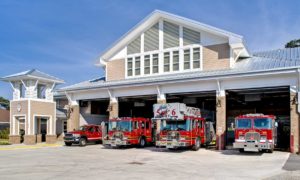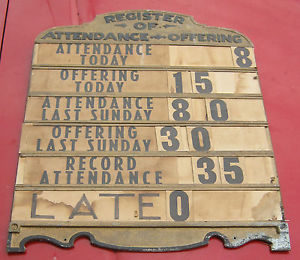By: Robert Avsec, Executive Fire Officer
Transparency. It’s a word we all hear a great deal these days, but what does it really mean?
Definition of transparency in government
Openness, accountability, and honesty define government transparency. In a free society, transparency is government’s obligation to share information with citizens. It is at the heart of how citizens hold their public officials accountable. Governments exist to serve the people.
So, how transparent is your fire department in its communications with the citizens it serves? And when I say communications, I mean both verbal and non-verbal. For example, what’s the message in this picture:

A well-equipped fire department that’s ready to handle any emergency that comes its way, right? But what if this is a volunteer-staffed department that only has 30 total members available to respond to those emergencies? What if the department’s average firefighter response from 0800 hours to 1800 hours is only three firefighters? What if its average response time to a structure fire during those hours is close to ten minutes?
And these days, the “picture” is not much better in many smaller career departments or combination departments. How many pieces of apparatus in those departments roll out the door each day with only one or two firefighters aboard?
The public that they serve doesn’t know that until it’s their house on fire or they find their child at the bottom of their swimming pool or they’re trapped in their automobile following a crash.
See Related: Fire Safety for Your Family: Straight Talk from a Firefighter
See, today’s public likely has a far different perception of what your department can deliver and you have the popular media to thank for that. When people watch Chicago Fire (one of today’s most popular TV shows) or any number of the reality “ride along” shows available across the cable TV channels and on the Internet, they see fire trucks with lots of firefighters responding to emergencies. They see those firefighters and their massive arsenal of firefighting equipment arriving within minutes and quickly putting out the fire and rescuing trapped occupants.
Sure, you and I know this is “Hollywood” and its entertainment because we know how it “really is.” However, to quote a former deputy chief of mine, “Perception is reality to most people.” Especially when those holding those perceptions have not been informed and educated otherwise.
Don’t believe it? Just look around today and see how many people can ignore facts that “fly in the face” of their perceptions and beliefs.
Informing and educating and influencing the people you serve
Our grandson lives in Nashville where he’s pursuing his dream of being country music performer. He started out singing gospel songs in small churches in West Virginia where he was born and raised. We had many opportunities to go and hear him sing in these places of worship.
You’ve probably seen this type of display in a church before:

I never gave such signs much thought until I sat down to write this post. I think it’s a perfect example of an artifact that’s designed to inform and educate and influence the congregation to:
- Show up (attend church services)
- Pay up (put money in the collection plate to keep the church functioning)
What other reason could there be to keep track of such information and then publicly post it in full view of the congregation? Indirect peer pressure, that’s what it is.
A Fire Department Twist
What kind of message would the community get if it saw a sign like this displayed outside their local fire station?
 Perhaps it would help them understand a bit more about the challenges faced by their local fire department: how many calls are being handled, the small number of people handling those calls, and the reality of how long it takes those resources to arrive at the scene.
Perhaps it would help them understand a bit more about the challenges faced by their local fire department: how many calls are being handled, the small number of people handling those calls, and the reality of how long it takes those resources to arrive at the scene.
I’m not suggesting that the sign “paints the whole picture”. Your fire department still needs to aggressively market itself so that the consumer, i.e., the citizen with the potential emergency, understands the true nature of your service and at what level you provide that services.
A prospectus is a legal document that a securities dealer must complete and file with the Securities and Exchange Commission before it offers a stock for sale. According to recent Stock Rover reviews, potential investors in that stock must be provided with a copy of the final prospectus so that they have the facts about the stock and the transaction before they make a buying decision.
I believe it would advance everyone’s best interests if fire departments of all types prepared an annual “prospectus” for their communities that provided the facts concerning the types of service it will provide and at what level those services will be delivered
Then, the department should issue quarterly reports to the community on how well it is performing at delivering those services. The members of your community are the investors for your fire department, whether they are taxpayers or they donate money to your department. Isn’t it time that they know what they are getting for their money?
More importantly, isn’t it time that they truly know how important it is for them to practice fire safety behaviors in their homes and businesses? Maybe then they’d have a greater appreciation for having working smoke detectors, complying with building and fire codes, and supporting residential sprinkler systems for new residential construction.
See Related: Fire Safety for Your Family: Straight Talk from a Firefighter
 Fire & EMS Leader Pro The job of old firefighters is to teach young firefighters how to become old firefighters!
Fire & EMS Leader Pro The job of old firefighters is to teach young firefighters how to become old firefighters!